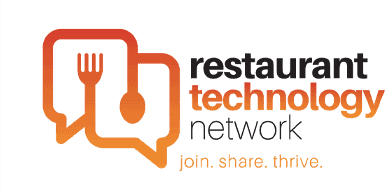A party of six comes to your restaurant for dinner. They enjoy a delicious meal, beautifully presented, and served with exquisite sociability and efficiency.
Then it’s time for the nightly check dance. First, as the diners recline in satisfaction, the server swings by en route to another table and drops off the checks discreetly ensconced in faux leather folders. The guests glance at the bottom line and slip their credit cards into the folder pockets for pickup.
The server, busy with other tables, eventually collects the folders and heads to the computer to enter each credit card individually. While the server returns to the table a third time, the diners wait to leave, prisoners of this payment do-si-do. The table remains tied up while new guests wait to be seated. The folders are returned and the diners sign their bills, collect their credit cards and receipts (whoops! wrong copy!) and leave. The server must return yet again to collect the folders with the signed receipts.
Whew! If only there were a more efficient payment method that freed the server, allowed diners to leave at will and facilitated a smoother flow of patrons.
Of course, the technology for this has been around for years. Contactless ordering and payment is now ancient by technology standards, having first been introduced in the UK back in 2007. And yet, even by 2016, only one in seven transactions was conducted online.
Then Covid-19 hit and staggered the industry.
Among the many changes it has brought about is the demand for contactless ordering and payment. The benefits during Covid are many.
Less contact between humans means less opportunity for transmission of the virus.
The time servers spend within six feet of patrons is reduced.
Eliminating multi-step ordering and payment behaviors facilitates faster table turnover demanded by the financial implications of limited capacity seating. No credit cards, bills, pens or folders change hands. Exposure to germs generally, not just the coronavirus, is reduced for staff and guests alike.
But the benefits beyond Covid are impressive too. Once life returns to something approximating normal, here are five reasons contactless ordering and payment is going to be permanent.
Added Convenience
Diners can access online menus on their mobile device by tapping or scanning an NFC tag or QR code, and order their meal before even arriving. They can initiate payment and add a tip securely and conveniently, without waiting in line or signing a receipt. The process is certainly simpler and more convenient than the current check protocols
OneDine offers a variety of 100 percent contactless payment solutions, including text-to-pay and scan-to-pay options. Patrons can customize their bills – for example by splitting the check – conducting the entire transactions on their mobile device.
The Time Has Come
Increasingly, municipalities are mandating contactless ordering and payment as a pre-requisite for re-opening. By the time the pandemic has waned, diners will have become used to ordering and paying remotely. According to a survey by Bentobox, 57% of restaurant customers expect to pay by some kind of contactless payment when they return to dining.
It’s not as if this is new.
Consumers have been paying with mobile devices outside of restaurants for several years now, using Apple Pay, Google Pay and a host of smaller providers. Credit cards enable contactless payment at stores worldwide. Even those consumers who haven’t adapted to a contactless form of payment have seen payment methods evolve over the last decade. Scanning a credit card over a reader is not significantly different than swiping it through a slot. By last year, more than 40 percent of payments made through Visa globally were made on readers.
It Works for Restaurants
More efficient ordering and paying offers multiple advantages to the house. When patrons are ordering before they arrive and paying as they leave it means tables are turning over faster and more diners are being served. That allows restaurants to better optimize high-demand periods, keep waiting lists short and boost revenue.
Online ordering and payment allows for eco-friendly menu changes in real time, eliminating the need to reprint menus and the danger that guests will attempt to order items that are no longer available. Happier customers equal a better dining experience, more positive online reviews and a higher rate of return visits.
The Cashless Society
Contactless payment is coming – everywhere – and it is coming soon. Covid is providing the catalyst for consumers to pay for everything with a tap: groceries, haircuts, travel, you name it. Restaurants are all likely to adopt soon, just as they adapted to credit cards, online reservations and other technological advances.
A More Personal Experience
Paradoxically, slashing the time servers spend doing the check dance will increase the personal element of front-of-house operations. How? By eliminating much of the time servers waste traipsing back and forth to deliver and collect bills, they’ll be freed up to check on guests, answer questions and generally improve the dining experience.
Restaurants that adopt these solutions will be rewarded with loyalty and better positioned to recover and grow their businesses more rapidly.





